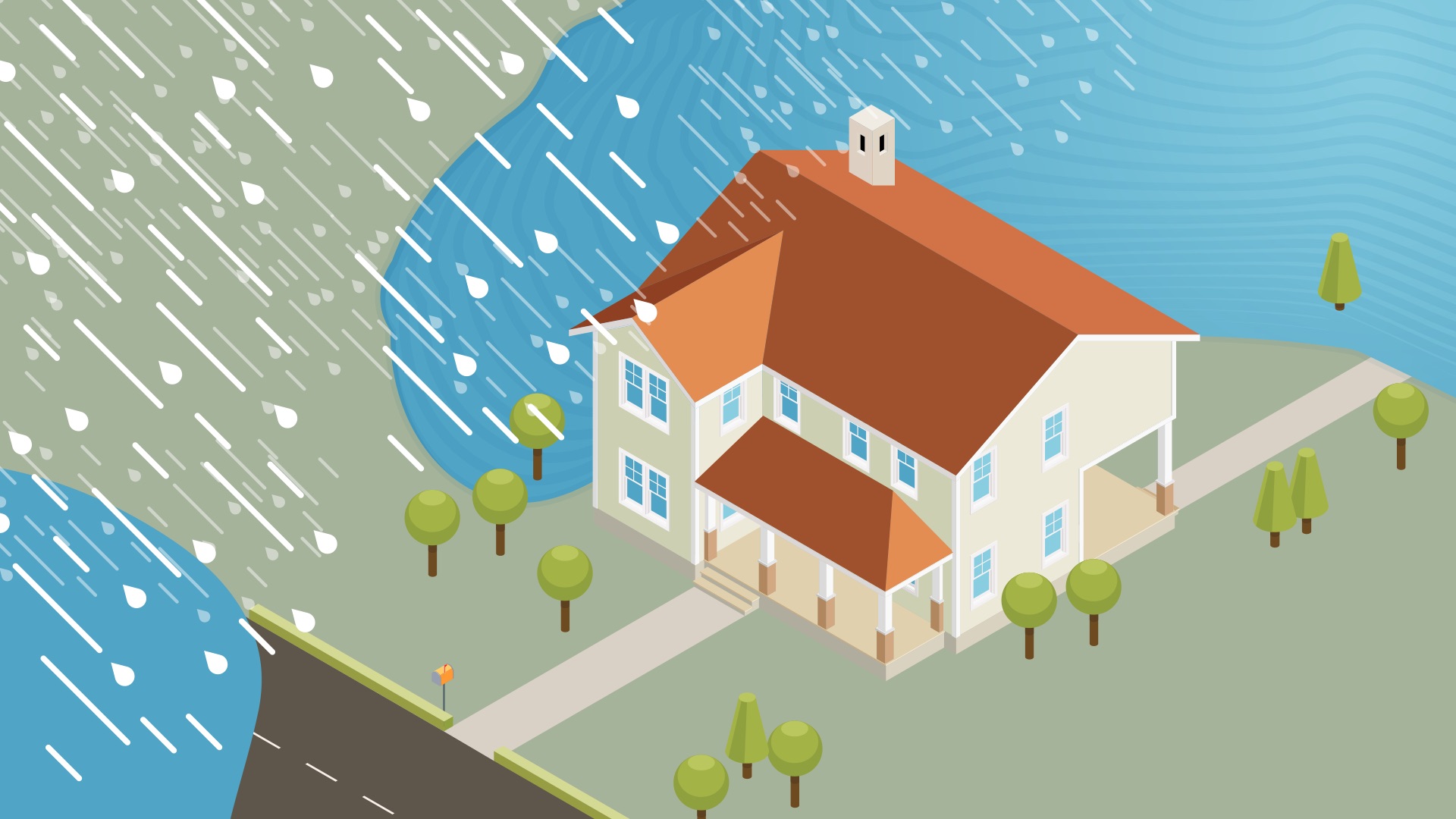7 Tips to Help Protect your Home this Spring

Spring is here. We all look forward to this seasonal shift that brings warmer temperatures, budding leaves and blooming flowers. It also comes with the dreaded possibility of spring flooding.
How can you prepare to combat swift snowmelts and excessive rainfall that can lead to property damage — and a lot of headaches? Keep reading…
Changing Weather Patterns?
Basement flooding is already on the rise all across Canada, resulting in billions of dollars of losses, according to a report by the Faculty of Environment at the University of Waterloo. The University indicates that climate changes leading to intense rainfalls, combined with aging infrastructure and growing urban areas (among other factors), give even more reason for homeowners to put flood protection measures in place.
In fact, their findings reveal that 1.7 million Canadian households are exposed to some sort of flooding risk. That’s about one-fifth of the population, with an average price tag of $43,000 per flooded basement.
Why do basements flood?
“More often than not, basement flooding is a result of overland flooding, infiltration flooding or sewer backup, or a combination of two or all three of these types of flooding,” according to the Institute for Catastrophic Loss Reduction (ICLR), a not-for-profit institute for disaster prevention research. (More on those terms later…)
In addition, ICLR explains that climate change scientists have reported that “severe rainstorms are occurring more often in many parts of Canada, and they are expected to continue to increase in frequency and severity.”
If you have previously experienced basement flooding, live in a low-lying area or live in an older home, then additional precautions should be taken. But any homeowner would be wise to beef up their spring thaw defences.
7 steps to prepare your defence
- Call the pros: When you think of calling someone in, the dollar signs start to flash. But this is one area you don’t want to skimp on. Have a plumber inspect and maintain your drains, sump pumps and backflow prevention devices. If you don’t have a sump pump and pit along with backflow devices, strong consideration should be given to having these devices installed as soon as possible.
- Backwater valves: Install a mainline backwater valve to protect basement plumbing, including the catch basin. Make sure your backwater valve is maintained and cleaned on a regular basis.
- Sump pumps: Select the right sump pump for your home by ensuring the motor is large enough to support it. Your sump pump should have its own outlet and circuit breaker, as well as a battery backup in the event of a power failure. Consider installing a warning device to signal water build-up in your sump pit.
- Take advantage of rebates: Before installing a backwater valve or sump pump, check with your municipality for incentives or rebates related to the installation of equipment used for flood prevention.
- Landscape: Although this will need to be tackled well in advance (before snow falls), it can make a major difference to adjust the slope of your yard and direct water away from your home. Look at the shape of any flower beds and ensure they don’t allow water to pool up near the building. For some lawns and yards, this could be a major landscaping project. As an interim measure, consider the purchase of a submersible pump and hose to drain “low spots” near the foundation.
- Get ahead in colder weather: In winter, move snow away from your home’s foundation as much as possible. But first, look up and consider hiring a professional to clear any excessive snow accumulation from the roof.
- Spring into action: As the weather warms up, watch for pooling water, reconnect your sump pump hose and extend it away from the foundation. Outside, also reconnect all downspout extensions and ensure they’re free of leaves and other debris. In addition, you’ll want to ensure those downspouts are not connected to the weeping tile and are directed away from your home.
Know your water damage definitions
Many people don’t know the terminology (and implications if you get it mixed up) when it comes to water damage, especially “overland flooding” and “sewer backup.” If you don’t have coverage for both, one could negate the other. Here’s the difference:
What is overland flooding? This is when water literally flows ‘over the land,’ and ends up seeping into buildings through any opening — doors, windows, cracks and any open spaces. The Government of Canada calls this “one of the most frequent and costly natural hazards in Canada.”
What is sewer backup? This is an unfortunate occurrence that often includes foul odours and other unpleasantries. Sewer backups are when water comes up through your sewer system and drain pipes, flooding into your home. This dirty water should be avoided at all costs, as it can also create health hazards for anyone in the house.
If you have coverage for sewer backup but not for overland water, your sewer backup coverage may not respond if you experience a backup but there has also been flood water identified inside your home.



